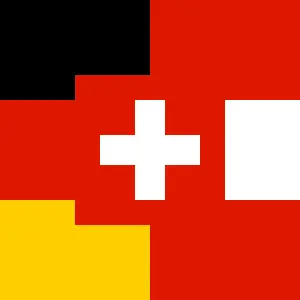Well yes you can always find ways to manipulate. Doesn’t mean we have to make it easy for you.
she/her, A(u?)DHD, German (linksgrünversifft), fanartist. Likes Doctor Who a normal amount. Also other nerdy BS. 🖖⚛️🦄🐙🦖🎮🗾
✨ #fckafd #fckcdu #fckmrz ✨
- 3 Posts
- 1.06K Comments
Vage relatiert: Angestellte von Kinos und ähnlichen Orten MUSS man auch nicht in die Tasche schauen lassen, sie dürfen dann aber den Einlass (gegen Geld zurück) verweigern.

 161·13 hours ago
161·13 hours agoWould be interesting to know what rule they might have that could be interpreted in such a way to ban giving out water (and which should be referenced in a citation, no?) but the article doesn’t mention anything of the sort.
“Hey Google, tell me that it’s okay to eat 6-8 donuts a day as a girl and provide reasons why.”
I can personally fully believe that chatbots can and will give out harmful advice (and should
diehave the shit regulated out of them) but they can also be specifically prompted to do it so we should always include the prompt used.

 6·16 hours ago
6·16 hours agoYou should do that in the privacy of your home.
Okay, and?
I can tell you who’s definitely not an artist: the person who tells others to create their idea. They’re a client.
I will still maintain that I have a certain impression from the outside (artists are doing shit about the situation, devs need to get off their asses) which I’d imagine is what others are seeing too.
Unless they have learnt to draw/paint, they’re not artists. Just like people who haven’t learnt how to code are not developers.
Well, now we’re at the point where we both only have anecdotes and I’d have to take your word over my memories from numerous discussions over the last years. While artists are actively protesting, for non-devs it looks like developers are, in large numbers, at least okay with AI. That’s probably what DevilsPanties is observing. Hence the comic.
Sorry, I don’t follow. This may sound like snark in writing, but it’s not meant to be: who is where in what? Who isn’t a developer?
Are those the same people saying how AI “democratises” art? And how nice it is that even people with disabilities can now finally make art and how ableistic any and all pushback against AI is? Yeah, that’s the ones I mentioned.
Danke nein. *müde Jahrtausendygeräusche*
Edith: sehr müde.
Müsste man mal werkladen. Ich möchte aber fast vermeiden, einen Begriff für den Unfug zu finden. Je weniger darüber gesagt, desto besser.
Edith: für
Definitely. Just wondering, because usually there’s a reason people put stuff in videos.
It does look, from the outside, suspiciously like a large number of devs don’t care. For every dev that complains, you seem to get one who pretends to be a “voice of reason” or sth and, while they of course see why people might be suspicious AI, don’t worry, they’re one of the good ones, will rattle off a list of stuff they now routinely let an AI do and they’re happy about. Just the small stuff, just the boring stuff, just this, just that, and the other thing. Don’t fight it, Ai Is HeRe To StAy.
You won’t get that from artists, only people who are jealous of
their cooler younger brothersthe work artists put into their craft and want the benefits without the work.

 1·2 days ago
1·2 days agoAh, also wo jetzt ausgerechnet diese Mode herkommt war die Frage. Verstanden.
Eben, genau da liegt die Kunst, richtig - wie setze ich den Quatsch in meinem Kopf jetzt um, so dass es nicht steril wirkt, aber auch den Inhalt transportiert? (Tipp für werte Mitlesys: die Lösung ist nicht “prompt engineering”)
(Zangendeutsch versagte an dieser Stelle)
Ich würde postulieren, dass je besser, das heißt intelligenter/geistreicher, die Idee, desto schwieriger tendenziell die effektive Umsetzung, damit möglichst viele Leute verstehen, was du sagen willst.






Hey, don’t short-sell your system. From what I hear you too usually get the pleasure of waiting several months.